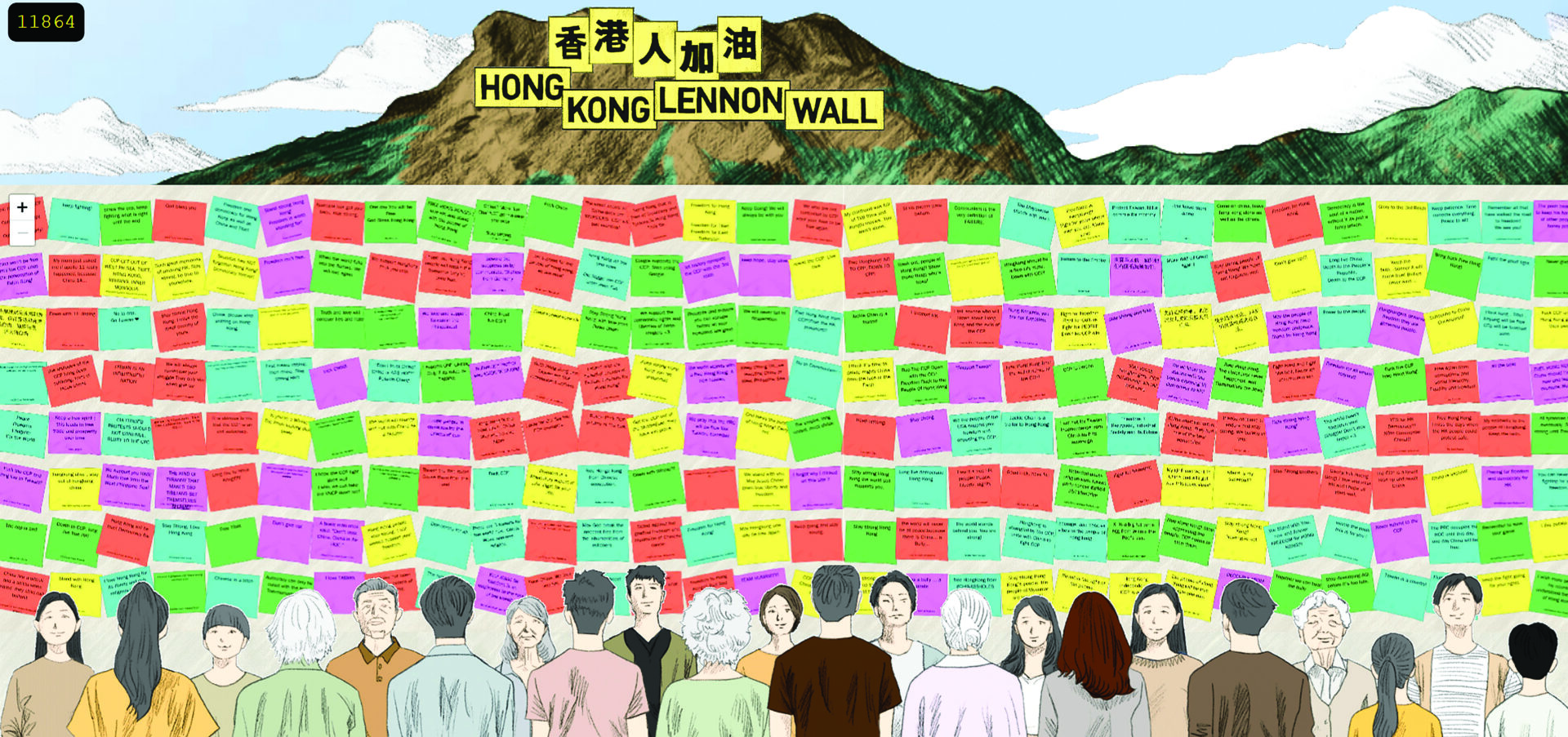Washington, DC: ‘CCP must lie in order to cover up the terrible things that they’re doing in China, in Hong Kong, and around the world. To do this, they use narrative warfare to control what people see as the truth.’
One of the few social media channels to fearlessly cover China is the popular and respected China Uncensored YouTube channel (1.95 million subscribers). To ensure editorial independence, Chris Chappell co-owns America Uncovered LLC—along with co-producers Matt Gnaizda and Shelley Zhang. Together the team not only produces China Uncensored, but three other shows as well, the longer form podacst China Unscripted, America Uncovered and Gamers Unbeaten.
In this edition of “Indo-Pacific: Behind the Headlines” we speak with Chris Chappell, the New York-based creator and host of China Uncensored about their Hong Kong Lennon Wall.
Q: What’s the idea behind the Hong Kong Lennon Wall?
A: Five years ago, the China Uncensored team was in Hong Kong, covering one of the biggest protests in human history. I will never forget watching 2 million people march through the streets of Hong Kong. They were protesting the Chinese Communist Party’s trampling of Hong Kong’s freedoms and autonomy. I felt incredibly inspired by Hongkongers’ courage.
In 2020, the CCP took advantage of the Covid pandemic to impose a National Security Law on Hong Kong that essentially made protesting illegal. They instilled fear and silenced Hong Kong’s civil society. Today, many Hong Kong activists are imprisoned or in exile.
So to make sure people remember the Hong Kong protests, we created a digital version of one of the things Hongkongers did five years ago. They put up sticky notes on walls all across the city with political statements, and called each location a “Lennon Wall”—which has its roots in the anti-communist movements in Eastern Europe in the 1980s. Making a Lennon Wall is extremely illegal in Hong Kong now, though, so we created a digital version online.
This new Lennon Wall is not just for Hongkongers. It’s for everyone, anywhere in the world. My hope is that people who feel powerless against the CCP can feel empowered to do something, even if it’s small. Thousands of people doing something small adds up to something big.

Q: What does this have to do with the CCP’s narrative warfare?
A: One of the CCP’s core weaknesses is that they cannot tell the truth. They must lie in order to cover up the terrible things that they’re doing in China, in Hong Kong, and around the world. To do this, they use narrative warfare to control what people see as the truth.
For example, they’ve manipulated their GDP numbers, they’ve lied about how many PLA soldiers died in the Galwan Valley clash with India, and they’ve repeatedly tried to claim that Covid did not come from China—instead blaming frozen seafood, Italy, and the US military.
The CCP uses narrative warfare to claim that Hong Kong is better now that the CCP has taken over. They say that the National Security Law the CCP imposed on Hong Kong has brought stability and prosperity to the city. They want to make it seem like the people of Hong Kong support the CCP, that Hong Kong hasn’t lost its freedom and democracy.
To do this, they have to make people forget that 2 million people marched in the streets against the Hong Kong government and the CCP. They must erase all the symbols of the Hong Kong protests, from the song “Glory to Hong Kong” to the colorful sticky notes of the Lennon Walls that sprang up around the city.
The digital Lennon Wall is a powerful symbol that directly counters the CCP’s propaganda. Each message on the wall shows that the world hasn’t forgotten the Hong Kong protests, and does not believe the CCP’s narrative about Hong Kong.
Q: Have you faced any particular challenges with this website?
A: We actually started from a different place than most people. Our number one priority was security. We hired a team of security experts to create a design where no one’s personal information or location can possibly be tracked, and the site can’t be hacked. The users don’t see any of that, but it took a lot of time and money.
I don’t know if anyone’s done this before. Most websites don’t start with: How can we not track users? But that was actually number one for us. It’s been a very difficult technical challenge.
Q: What kind of response have you gotten?
A: So far we’ve had more than 11,000 unique posts. People have the option to write their location in their note, and from that we’ve seen posts from all around the world. For example, we have several dozen messages from India supporting and encouraging Hongkongers.
It’s a unique combination of interactive art and political messaging, and that seems to resonate with people. And people are not just talking about Hong Kong. People are posting about Taiwan, the Philippines, Tibet, Xinjiang—all of these places that face repression from the CCP.
And people are posting from countries like India, Lithuania, and Australia that are dealing with challenges from the CCP as well. We’re also getting messages from Hong Kong and even from Beijing. In fact, I wonder if any CCP officials have posted on our wall.
Of course, the CCP is not happy with us. Within a couple days, they had already blocked it in China using their Great Firewall. The good thing is, if people inside China use a VPN, they can still access our site. And they can safely leave messages, since the site can’t track any personal information.
We worked on the digital Lennon Wall with the Hong Kong Democracy Council in Washington, DC. And they pointed out that even in the Lennon Walls in Hong Kong, people who were visiting from other countries would post about their own struggles with the CCP and other authoritarian regimes too. So the Lennon Walls ended up uniting people around the world.
We see the digital Lennon Wall doing the same thing. Some of the messages are inspiring, some are angry, some are funny, but they all show that we’re not alone.
Q: So how can people contribute to the digital Lennon Wall?
A: Go to https://hklennonwall.com/ and post your own message on the wall. And share it with your family and friends. Our initial goal was to get over 10,000 unique posts, but we hope to get many more.
Cleo Paskal is Non-Resident Senior Fellow at the Foundation for Defence of Democracies and columnist with The Sunday Guardian.

